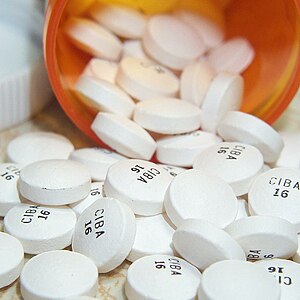
INTRODUCTION:
Drug administration is one of the biggest responsibilities of nurses. To ensure patient drug therapy efficiently and correctly , the assistant should be familiar with the indications , dosage and effects of the medication prescribed. The patient should be questioned before each operational administration of any past allergic reaction to the substance . Assistant must have knowledge and skills to minimize patient anxiety and maximize efficiency product ( knowing how to manage their time , etc.).
Ways to manage their medicines :
Drugs can be administered in various ways :
- route of administration depending mucodermică : ocular , vaginal , nasal , auricular , transdermal (through absorption) , oropharynx ( inhalation )
- enteral route of administration depending on : the absorption of drugs through the gastrointestinal tract parenteral route of administration : intradermal injection or infusion , subcutaneous, intramuscular , intraevenoase , intrarectal , intraosseous , intraartriale
- given way Endotracheal manage their medications in the respiratory system with endotracheal tube
- epidural route processing and management : management of the medication ( anesthetic or opioid analgesics ) by an epidural catheter inserted
- route of administration depending intrapleural: injection of drugs into the pleural space
To prevent errors in medication administration
Before administering any medication it should be compared with medication prescribed by physician observation sheet . Ensure mental rule of five " P" :
- right patient
- right medicine
- right dose
- manage their way right
- time (hour ) processing and management according
However, before any drug will consider patient rights :
- The right to know why a particular drug is administered and what side effects to expect
- The right to refuse medication prescribed
There were many facilities to prevent errors of drug administration , especially those whose administration increased risk :
- amiodarone
- anticoagulants
- benzodiazepines
- chemotherapeutic
- dopamine
- dobutamne
- insulin
- lidocaine
- opioid ( morphine )
- thrombolytic
- Different strategies for preventing medication errors processing and management of high risk are to prepare them so that they can be immediately infused so -called " premixed infusion " .
- Before their operational administration should be checked by two nurses ( dose and infusion rate ) .
Tracking the response to a particular drug administration requires a good knowledge of the patient's condition and the expected effects of the drug administered. For example, if a patient continues to have received an antiarrhythmic premature ventricular contractions , should tell the doctor that administered the drug does not produce the desired effect.
In monitoring the effectiveness of certain therapies medicamentuoase be taken into account and the results of laboratory tests , which may indicate a therapeutic effect , an adverse or toxic levels . For example, prothrombin times helps to assess the effect -administration of heparin or low potassium levels may be a sign of adverse effects of a diuretic. Some drugs , however, can affect the outcome of laboratory tests , causing the so-called "false positive " . For example , codeine may be increased intracranial pressure .
It will closely monitor the patient's condition . Some changes that decrease or increase in weight can affect the action of certain drugs. Other factors such as patient age, physical constitution , sex, emotional status may affect also the patient's response to drug administration .
Since most patients receiving more than one drug , should also be taken into account interaction. Interaction between drugs means a change in the absorption , distribution, metabolism and excretion , which may occur in another drug or immediately thereafter. A desired interaction
as the basis for therapies combined medicamentuoase is potentiation effect of a drug, helping to maintain a certain level of blood or minimize adverse effects by using another drug. On the other hand , some interactions may have undesirable results such as reducing the effect of a drug, or , on the contrary , to maximize its toxicity. For example, smoking patients require higher doses of theophylline (a medicine used primarily for asthma , which is metabolized in the liver) than patients smoking because smokers activates liver enzymes that increase oxidative metabolism of theophylline .
Tracking adverse effects:
The administration of one drug is necessary to recognize and identify side effects , toxicities and drug allergies . Some side effects are mild and transient , the patient developing a tolerance to the medicine . Others require a change in drug therapy . A toxic reaction to a drug can be acute due to excessive doses or chronic , due to the gradual accumulation of drug in the body. The aemenea , toxic reactions may occur as a result of changes in metabolism or excretion which causes the growth of drug levels in the blood. An allergic reaction to a drug is the result of an antigen - antibody reaction . The reaction may be the trivial hives to anaphylactic shock . Therefore before any check -administration drug allergic reaction . In principle, allergy test done before the first dose of medication. Also bear in mind that a negative allergenic history does not exclude a drug allergic reactions present or future. Other adverse effects of medications can be dependent and idiosyncratic reactions (occurring in people with certain genetic deficits ) . Any drug administration , route of administration , dosage, patient refusal , adverse effects should be properly notified and eligible health care plan with the signature .
No comments:
Post a Comment